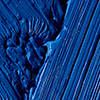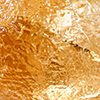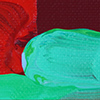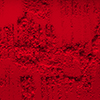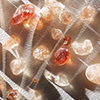Painting Medium
Non-yellowing free-flowing medium added to oil and alkyd paints to improve paint handling and promote the brushing out of colours.
Stand oil content ensures pale colours stay bright whilst deep tones are enriched.
Constituents:
Stand Oil (40 Poise), Distilled Gum Turpentine, Alkali Refined Linseed Oil, Cobalt Drier.
Product code:
007

Painting Medium Product Information
Product Application
Langridge Painting Medium may be added to oil colours in quantities at the discretion of the artist.
Initially small additions will purely aid the flow qualities of existing oil colours. As more medium is added to the oil colour, the transparency will be increased due to the further dispersion of the pigment throughout the medium.
In accordance with all Langridge Painting Mediums, Painting Medium is formulated with a proportion of oil to solvent that can be used unrestrictedly in glazes and washes without risking underbinding the pigment from the oil.
After 20-30 minutes of applying Langridge Painting Medium the surface will set-up to a tack that grabs any succeeding brush strokes. The wet, but tacky, paint surface can be readily painted into, even quite aggressively, without moving or disturbing the areas of fresh paint underneath. This allows for a wet-in-wet technique with very controlled manipulation of paint including soft blending.
Stand oil used in Langridge Painting Medium has pronounced leveling qualities. If more than 50% is added, the resulting paint film will exhibit an enamel finish with little or no physically raised brushmarks.
Langridge Painting Medium has a high oil content and, as such, is a ‘fat’ medium. It should not to be used for underpainting if oil colours with no additional medium are to be applied on top.
Dries to a gloss finish.
For the prevention of sinking-in of paint
If a support for painting (e.g. canvas) is poorly primed, oil colours will ‘sink-in’ to the surface and exhibit a dull and lifeless colour reflection. The oil from the paint is absorbed into the support, leaving the pigment underbound and the surface liable to crack or dust/flake off. In this case ‘oiling-out’ can rectify the paint film.
Altering the reflective finish
The addition of an artist’s wax medium (Wax Painting Paste or Cold Wax Medium) to Painting Medium can reduce the gloss finish normally associated with an oil paint medium.
Mix together 1 part wax paste to 6 parts Painting Medium for a matt finish.
A higher proportion of wax medium may be added for extra matte effects.
The addition of a wax medium will give more body to the medium, so the artists technique should allow for this in application.
Sealing timber and other non-flexible supports
Where an absorbent non-flexible support such as wood or composite timber product (e.g. MDF) needs a penetrative sealant.
Adhesion problems
When very fluid glazes are applied on top of a layer of glossy paint in which there is a high proportion of Langridge Painting Medium the surface may exhibit surface beading. To encourage inter-leaf adhesion work the freshly applied paint with a brush into the preceding layer until no beading is observed.
To even out the final reflective quality of the painting
There are numerous reasons for an uneven reflective quality in the final paint film. Differences in the particle size of individual pigments, the various recipes of individual oil colours, the variety of oil mediums, layers and techniques employed etc. generally lead to a finished picture with a wide range of reflective finishes.
Some may like the effect however others may find it distracting.
If the surface has only minor variation, the application of Retouch Varnish once touch dry or a final picture varnish after the painting has had time to dry thoroughly can generally unify the surface.
If the reflective disparity is highly pronounced, a picture varnish may not even the differences out. In this case the surface can easily be rectified by “oiling out” using Langridge Isolating Medium or another “Fat” medium. Oiling out is a non removable process and does not replace a removable artists’ varnish.
Thinning
For best results thin with Distilled Gum Turpentine. However, Langridge Low Toxic Solvent Solvent or Solvent 75 may be substituted. Due to the lower solvency action of the latter solvents, an increase in ratio compared to turpentine may be required. Over-thinning with solvents can lead to the partial destruction of the paint film. Langridge recommends a dilution rate of no more than 30%.
Appearance
Langridge Painting Medium is a pale amber colour liquid with characteristic Gum Turpentine odour.
Very fresh medium may exhibit a green cast. The colour of the medium will not effect the oil colours with which it is mixed.
Clean Up
Clean brushes with any artists’ solvent (eg Gum Turpentine, Low Toxic Solvent, etc.).
For further washing apply a small quantity of Marseille or other pure olive oil soap and massage the bristles of the brush to release any remaining colour. Wash thoroughly in warm water. Leave to fully dry before using for oil colours.
Drying Times
24-48 hours to touch dry. Any airflow over the surface will evaporate the solvent more rapidly which will reduce drying times.
Full film drying 3-6 months
